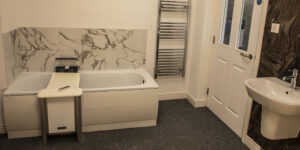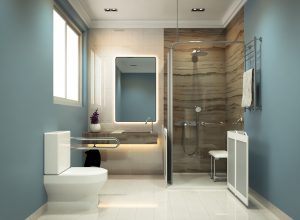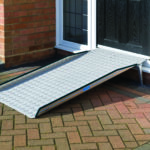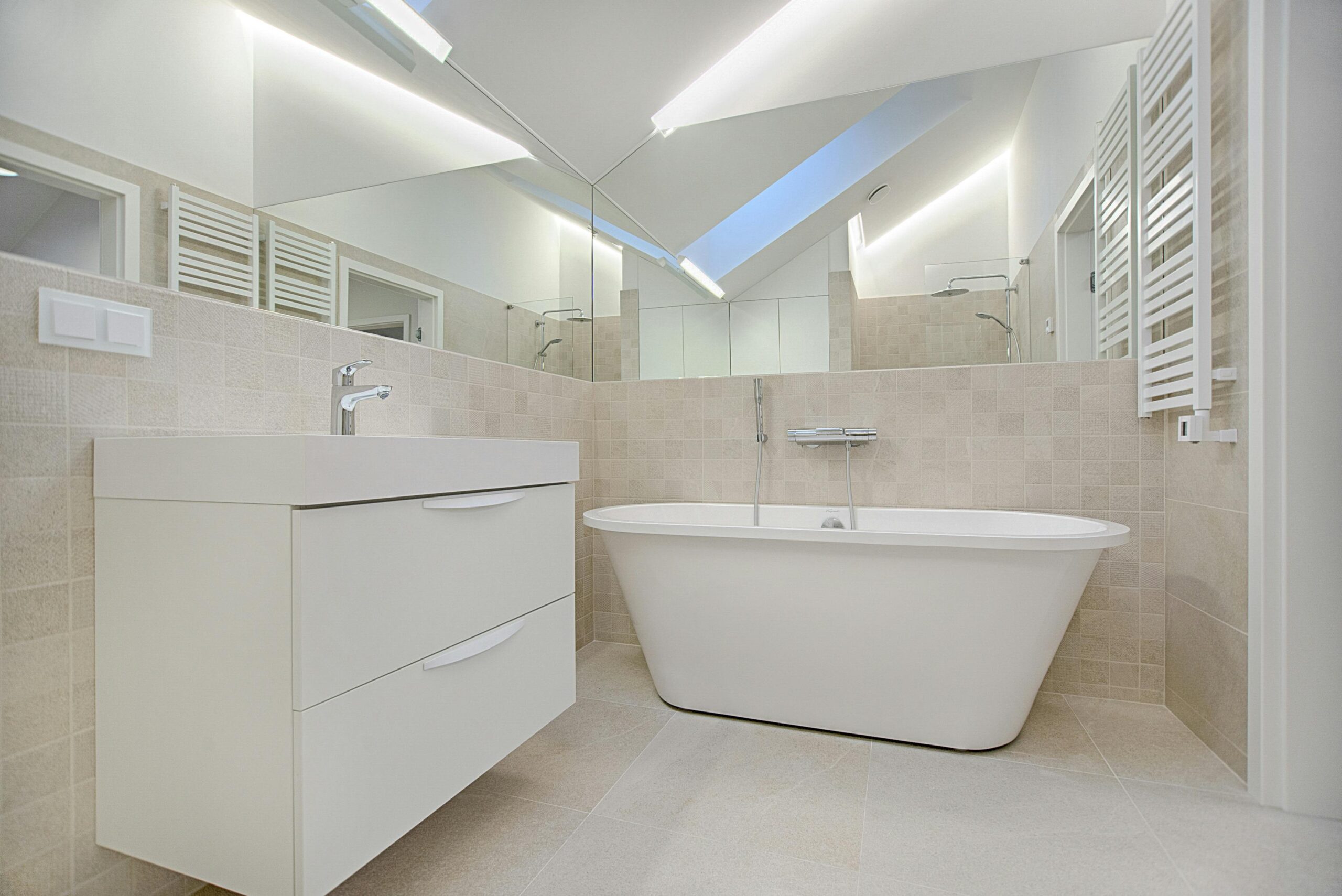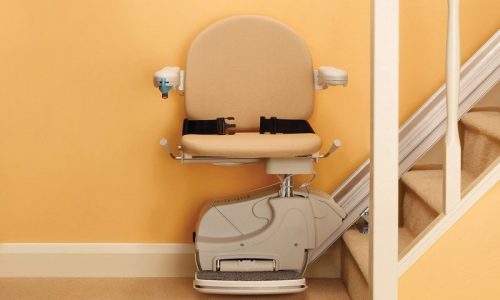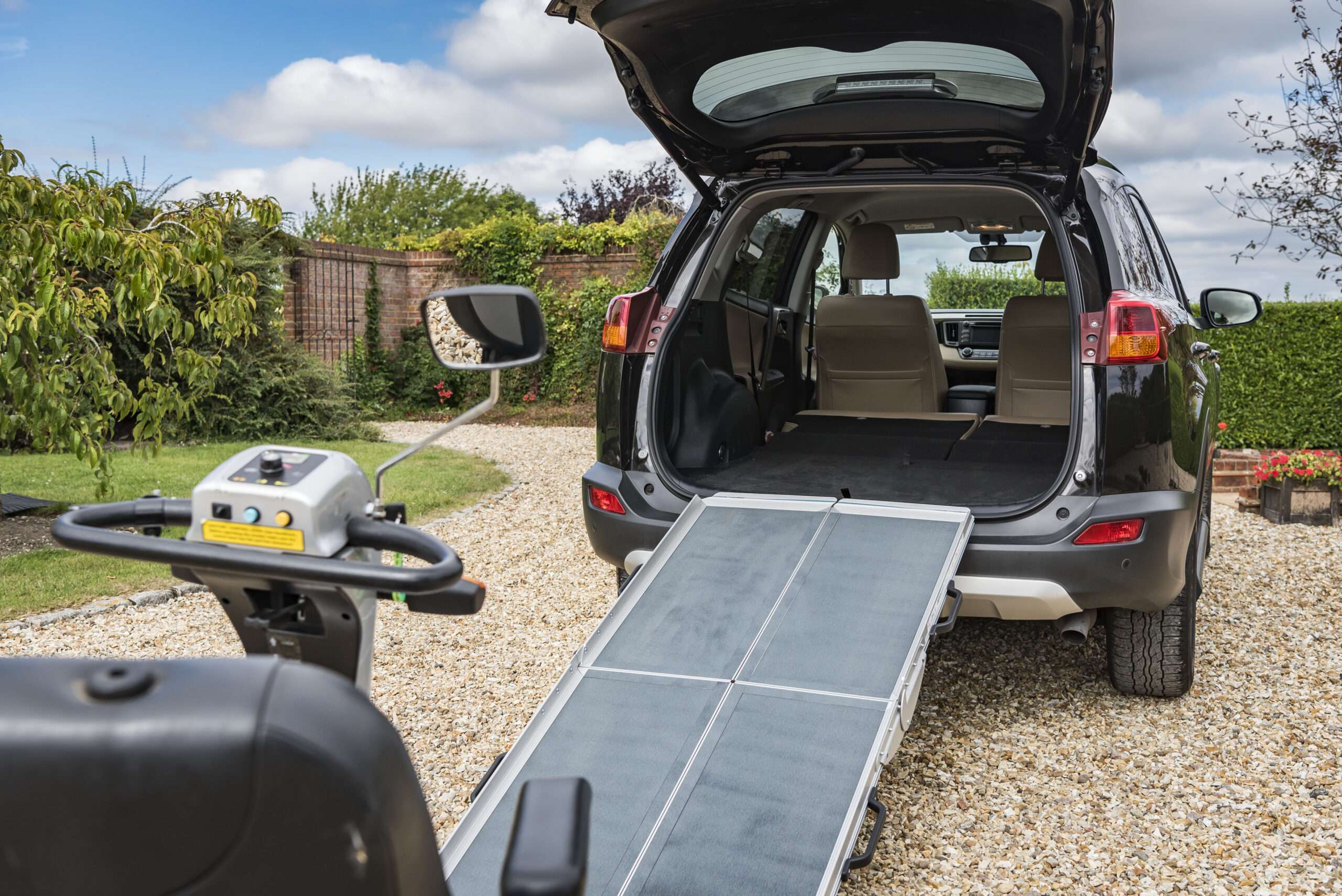At Aquadapt, we have over 35 years’ experience of transforming bathrooms into accessible, stylish spaces that enhance independence and quality of life, and our expertise in wet room floors has helped countless individuals with mobility challenges reclaim their bathroom independence.
In this blog we share our insights on wet room flooring to help you make informed decisions for your home, or the home of your client.
Jump straight to…
-
- What Makes Wet Room Floors Special?
- The Three Essential Features of Quality Wet Room Flooring
- Choosing the Right Material: Tiles vs. Vinyl
- Cleaning Pros & Cons
- The Foundation: Wet Room Floor Former Systems
- The Aquadapt Approach
- The Complete Bathroom Adaptation with Aquadapt
- Wet Room Flooring: Frequently Asked Questions
What Makes Wet Room Floors Special?
Wet room floors are the cornerstone of accessible bathroom design. Unlike traditional bathrooms with step-up shower trays or bath edges that create barriers, wet rooms offer a completely level-access solution. The secret lies in their construction: a specially designed former tray set into the floor and covered with waterproof, slip-resistant flooring.
The gentle slope toward the waste pipe ensures efficient drainage while maintaining a seamless appearance throughout the bathroom. This eliminates thresholds that might present obstacles for wheelchair users or those with mobility aids.
Our experienced installation team ensures that every wet room floor is watertight and blends perfectly with its surroundings, creating a continuous surface that’s both practical and visually appealing.
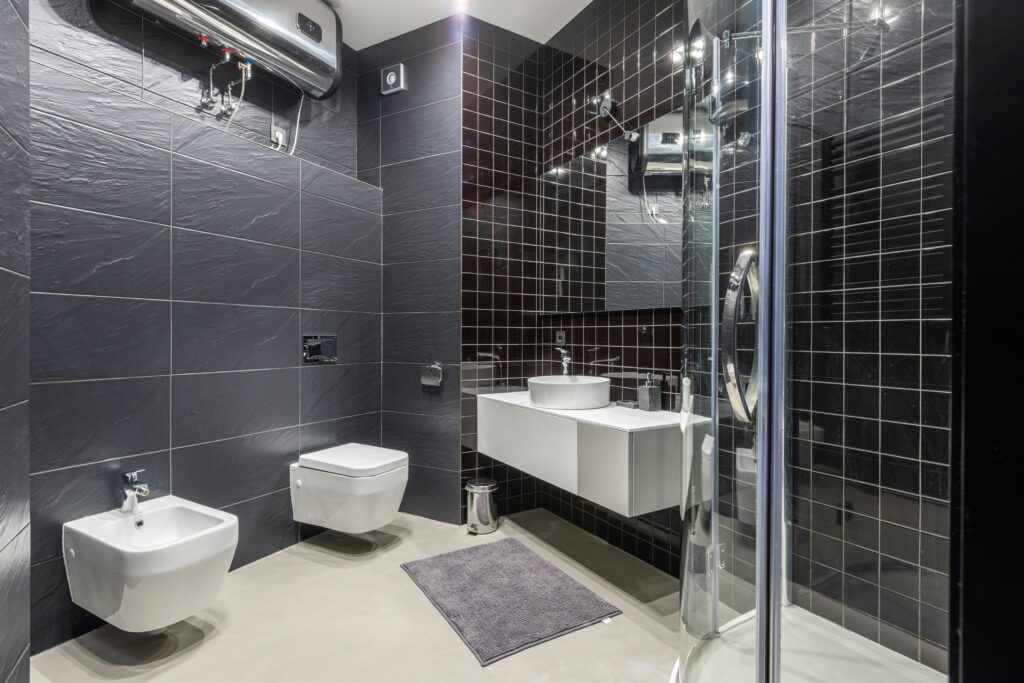
The Three Essential Features of Quality Wet Room Flooring
1. Waterproof Properties
In bathroom environments, water resistance is essential. Carpets and other porous materials have no place in wet rooms as they absorb water, creating humidity and dampness that can contribute to respiratory problems and other health issues.
We recommend hard, waterproof flooring options like tiles and vinyl for their impermeability and resistance to moisture penetration. These materials create an effective barrier that keeps water where it belongs—on the surface, ready to drain away.
2. Durability Considerations
A bathroom experiences consistent daily use, making durability a critical factor in flooring selection. This is particularly important for wheelchair and shower chair users, as not all flooring types can adequately handle the repeated pressure of wheels rolling across the surface.
At Aquadapt, we select materials specifically for their ability to withstand the unique demands of accessible bathrooms, ensuring your wet room floor remains functional and attractive for many years to come.
3. Non-Slip Safety Features
Perhaps the most critical element of wet room flooring is its anti-slip properties. Water from showers creates slippery surfaces that can make bathrooms hazardous environments. The statistics speak for themselves: Yorkshire Ambulance Service receives approximately 236 emergency calls daily for fall-related incidents, and across the UK, falls represent the single largest cause of emergency hospital admissions for people aged 65 and over.
We take slip resistance seriously, ensuring every wet room we install features flooring that remains safe even when wet.
Choosing the Right Material: Tiles vs. Vinyl
Tile Flooring: The Traditional Choice
Tiles have long been associated with bathroom environments, offering several advantages:
- Exceptional durability and resistance to impacts.
- Diverse textures and styles, including realistic wood-look options.
- Compatibility with underfloor heating systems (beneficial for conditions like arthritis that may worsen in cold weather)
However, tiles do have some drawbacks:
- Grout lines collect dirt, complicating cleaning (see below).
- Hard surfaces present greater injury risks during falls.
- Premium pricing for quality non-slip options.
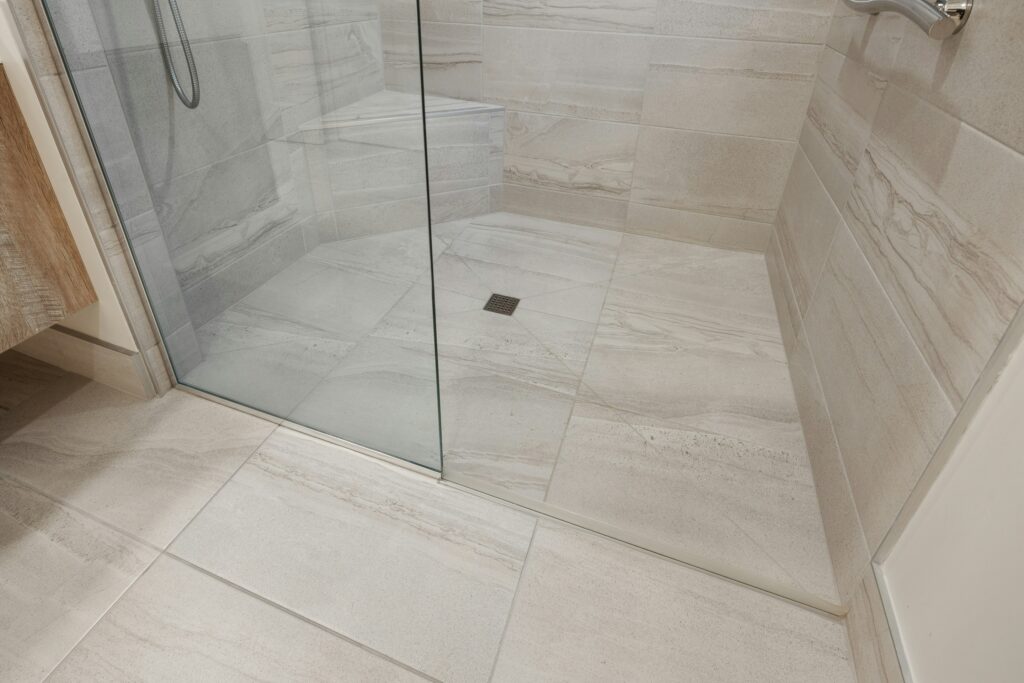
Vinyl Flooring: The Practical Alternative
Our experience at Aquadapt has increasingly led us to recommend vinyl for wet room applications:
- Continuous flexible sheets create a completely impermeable water barrier with no seams or joints.
- Contemporary vinyl options offer extensive design variety, including luxury finishes like marble effects.
- Exceptionally easy to clean and maintain (see below).
- Affordable non-slip options readily available.
While some clients initially hesitate due to perceptions of vinyl as clinical or institutional, modern vinyl products offer aesthetic appeal alongside practical benefits that often make them the ideal choice for accessible wet rooms.
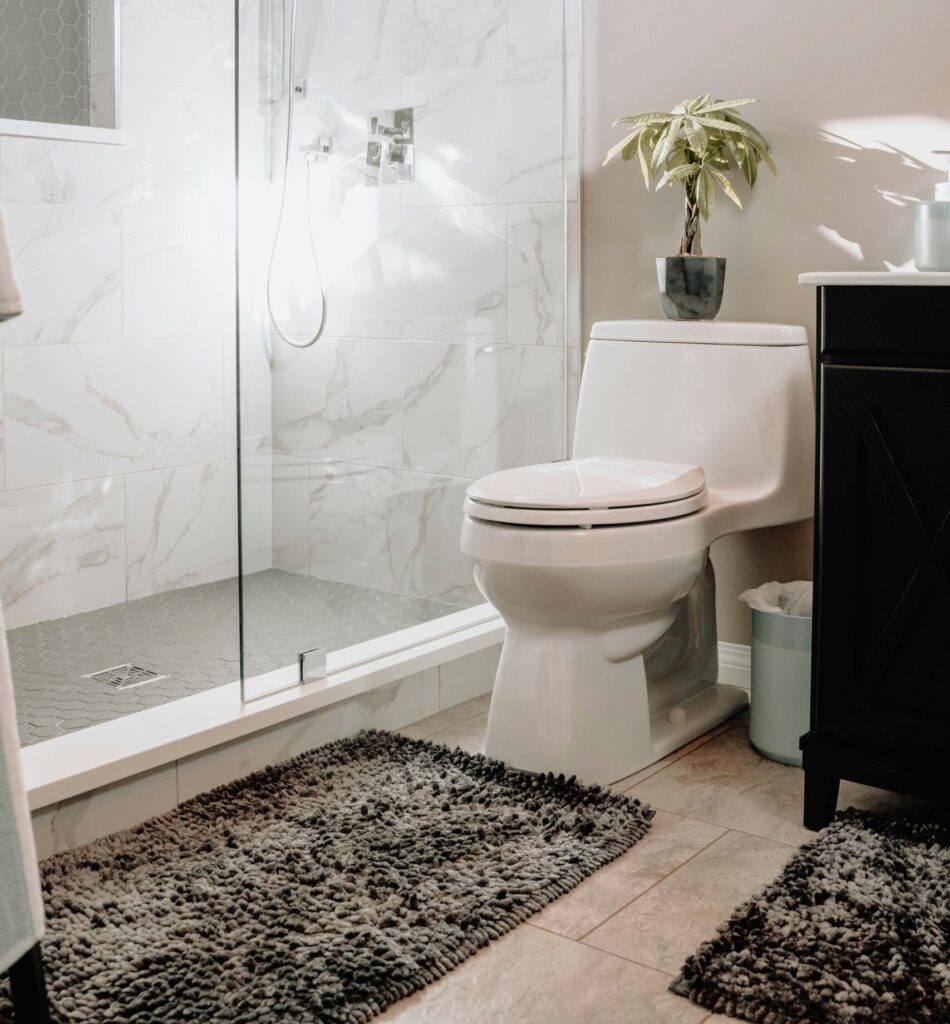
Cleaning Pros & Cons
Specific cleaning and maintenance requirements for wet room floors differ, with tiles requiring more labour-intensive sanitation routines. On the flip side, tiles are compatible with underfloor heating which helps the floor to dry more quickly, reducing cleaning frequency. Vinyl flooring is more susceptible to damage from abrasive scrubbers which can scratch the surface.
Tile Flooring Maintenance:
- Requires pH-neutral cleaners to prevent grout damage and tile discolouration.
- Grout lines need regular attention with dedicated cleaners and stiff brushes.
Vinyl Flooring Maintenance:
- Only requires mild detergent and warm water, making the job fast and simple.
- No grout lines mean no specialised cleaning products or tools are required.
- Seamless installation creates fewer places for dirt and bacteria to accumulate.
Whether the preference is for the traditional effect and exceptional durability of tiles despite their maintenance demands, or vinyl’s practical water-resistance and simplified cleaning regimen, we can provide advice on the best way to keep your floor in tip-top condition – read our post on wet room floor cleaning for more information.
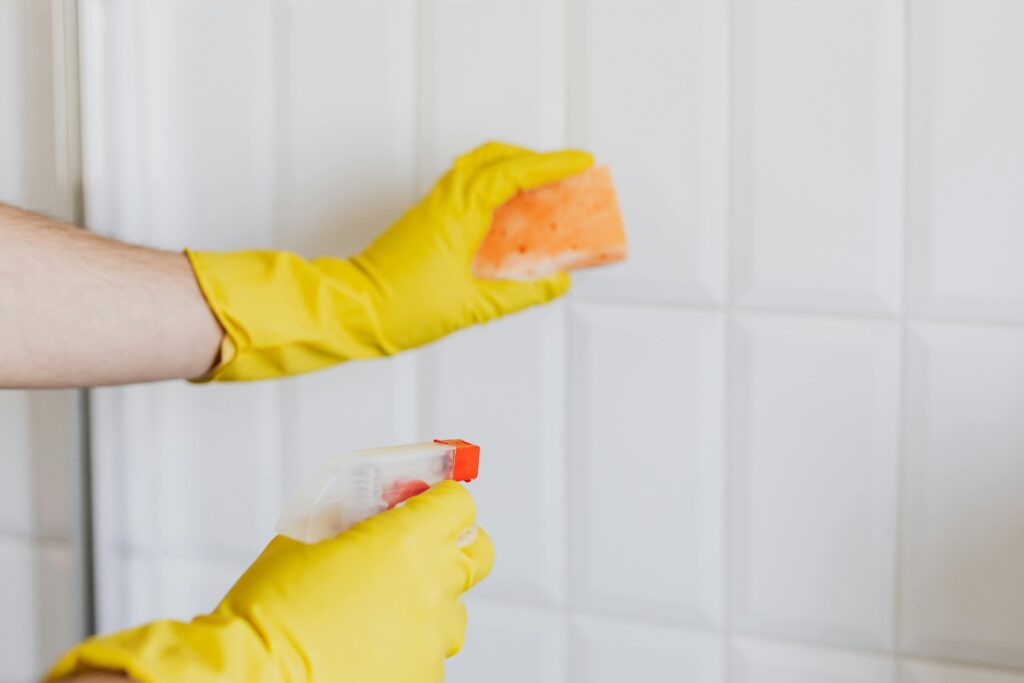
The Foundation: Wet Room Floor Former Systems
Every quality wet room begins with the right floor former system. These typically consist of extremely strong glass-reinforced plastic (GRP) material, often 22mm thick to match standard floorboard dimensions for seamless integration.
Modern wet room floor systems feature:
- Pre-formed drainage gradients (typically four-way falls) directing water toward the central drain point.
- Rotating drain plates that can turn 360° to avoid underfloor obstructions.
- Cellular or spoke pattern structures providing increased rigidity while allowing excellent bonding with concrete.
These systems can be installed on both timber and concrete floors, making them suitable for ground floor or upper story applications. Many can also be trimmed to fit specific spatial requirements.
Size Doesn’t Have to Limit Accessibility
At Aquadapt, we’ve successfully adapted tiny bathrooms and even spaces under stairs to provide level, wheelchair-accessible wet rooms. We’ve found that accessibility can often be achieved even within significant spatial constraints when designed by experienced professionals.
Beyond Flooring: Enhancing Safety and Accessibility
A truly accessible wet room incorporates additional features beyond the floor itself:
- Strategically positioned grab rails at appropriate heights
- Grip strips for additional traction
- Shower chairs for users who struggle with prolonged standing.
These complementary elements work alongside the wet room floor to create a comprehensive wet room safety system.
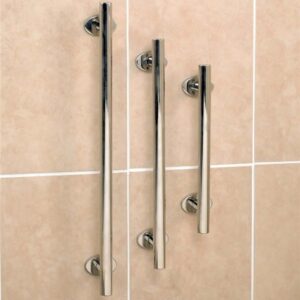
The Aquadapt Approach
We believe that accessibility should never compromise on style or quality. Our approach to wet room floors embraces both practical utility and high-end luxury, creating beautiful, accessible spaces tailored to individual needs.
Our services include:
- Free, no-obligation site surveys
- Expert design consultations
- Professional installation by our dedicated team
- Minimal disruption during the installation process
We understand that each client’s needs are unique, which is why we take the time to evaluate specific requirements and spatial constraints before recommending optimal design solutions.
The Complete Bathroom Adaptation with Aquadapt
Wet room floors combine smart design, quality materials, and easy access features.
When properly installed, they create safer, more independent living environments that significantly enhance quality of life.
Whether you’re adapting your own, or your clients’ home for changing mobility needs, or planning for the future, Aquadapt’s expertise in wet room installations offers valuable guidance through what might otherwise be a complex decision-making process.
Contact us today to discover how we can help you create a bathroom environment that balances safety, functionality, and personal dignity—without compromising on style.
Wet Room Flooring: Frequently Asked Questions
What are the main benefits of wet room flooring compared to traditional bathrooms?
Wet room flooring offers several advantages:
- A complete level-access solution with no steps or thresholds.
- Enhanced accessibility for wheelchair users and those with mobility challenges.
- Easier cleaning and maintenance with fewer corners and edges.
Is a wet room suitable for small bathrooms?
Yes, even tiny bathrooms and spaces under stairs can be transformed into accessible wet rooms. Professional design expertise can maximise functionality within spatial constraints, making wet rooms an excellent option for bathrooms of all sizes.
What are some popular wet room ideas for small spaces?
Innovative wet room ideas for smaller bathrooms include:
- Wall-mounted fixtures to maximise floor space.
- Glass panels rather than full enclosures to create an open feel.
- Light colours and large-format tiles or vinyl to create the illusion of space.
- Recessed storage niches to reduce protrusions into the room.
- Strategic lighting to enhance the sense of openness.
How do you make a wet room on a concrete floor?
Creating a wet room on a concrete floor requires:
- Preparing the concrete surface to ensure it’s level and clean.
- Installing a wet room floor former system designed for concrete applications.
- Applying a waterproof membrane across the entire floor and up the walls.
- Installing drainage components with the correct fall toward the waste outlet.
- Laying your chosen wet room flooring material with appropriate adhesives.
How can I ensure my wet room is safe for elderly users?
Enhance safety in your wet room by incorporating:
- High-quality non-slip wet room flooring with appropriate ratings.
- Strategically positioned grab rails at suitable heights.
- Shower seats or chairs for those who struggle with standing.
- Thermostatic shower controls to prevent scalding.
- Good lighting to improve visibility.
- Contrasting colours between floor and walls to help with spatial awareness.
Do we offer advice on financial support for wet room installations?
At Aquadapt, we understand that creating an accessible bathroom is an important investment. We can offer advice on potential funding assistance that might be available through local authorities or charitable organisations for those with specific accessibility needs.
For more information about wet room flooring options or to schedule a free, no-obligation site survey, contact us today.


